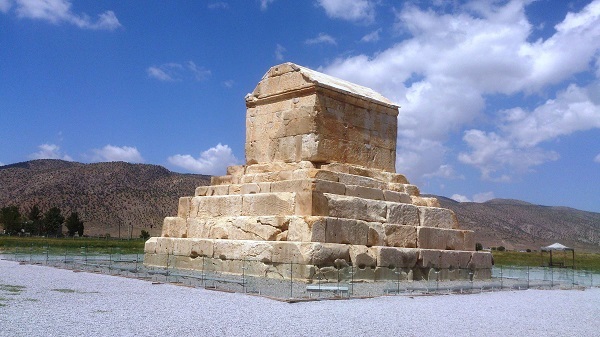Pasargada
This city, founded in the Pars region in the 6th century BC. C. by Ciro the Great, it was the first capital of the Achaemenids. Pasargadae is the place where a varied mix of art and architecture, adopted from the countries incorporated into the vast Achaemenid empire, was created to generate the unique ancient Persian style, which was later perfected in Persepolis. The archaeological remains of its palaces and the design of the gardens, as well as the mausoleum of Cyrus, are not only an unrivaled example of the first phase of the evolution of Achaemenid art and architecture, but also an exemplary testimony of the Persian civilization. In fact, Pasargada became a prototype of the Persian Garden concept of four quadrants divided by streams and paths. The architecture of Pasargada is characterized by refined details and subtle verticality.
The Achaemenid empire, extended from the eastern Mediterranean and Egypt to the Indus River in India, is considered the first to respect the cultural diversity of its peoples. This characteristic was reflected in its architecture which became a synthesized representation of the different cultures.
Tomb of Cyrus the Great
Built on six steps that lead to the current burial, whose chamber has a low and narrow entrance. Alexander the Great paid homage to the mausoleum of Cyrus after the sacking and destruction of Persepolis and ordered Aristobulus, one of his lieutenants, to enter the building where he found a gold bed, a table set, a gilded coffin, some garments adorned with precious stones and an inscription.
It is said that in the inner chamber Cyrus the Great wrote a message to any conqueror, including Alexander the Great, who after hearing the words of Cyrus the Great began to cry:
“Oh man
Whoever you are,
Wherever you come from,
I am Cyrus, who founded the empire of the Persians.
Do not have a grudge
At this little land that covers my body. “
The vast royal gardens are scattered among the remains of the private palace, the residential palace, and the entrance palace. Cleverly organized and watered, its structure differs from the mud brick materials used in Susa. Breaking with contemporary Assyrian traditions, both at Pasargadae and later at Persepolis, the palaces consisted of hypostyle rooms whose roofs were supported by several rows of internal columns. Thanks to this technique, huge halls of ceremonies were formed, and the Achaemenids made the most of it to signify their superiority over the other nations of the Empire.
Cyrus the Great, the father of all soldiers in the Middle East and Persia, celebrated the conquest of Babylon with a document described as the foundation of the charter of human rights: “The Cyrus Cylinder.” A clay document that records the release of exiles, including Jews.
If you are passionate about mountains, the Silk Road, Persepolis, Darius, Cyrus, anthropology, historical landscapes and the fascinating culture of the Middle East, SITO Travel will help you organize your trip to Iran. Get in touch with us because our experience is born and developed in the field.



Comments